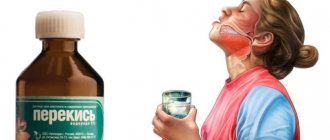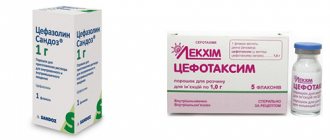Scientists claim that bacteria have existed on Earth for at least 3.8 x 109 years, while antibiotics have been used in clinical practice only since the 40s of the last century [1]. But even this time was enough for the drugs of this group to become overgrown with many myths that interfere with effective antibiotic therapy. Despite the fact that treatment with antimicrobial agents is a priori impossible without the direct guidance of a doctor, the modern “intelligent patient,” influenced by pseudo-scientific data, makes an “invaluable contribution” to the cause of antibiotic resistance and other negative consequences of incorrect use of antibiotics. A competent pharmaceutical specialist who has correct information about antimicrobial agents and is ready to share it with the client can warn him against rash decisions.
Myth. Modern antibiotics are so “strong” that not a single bacteria can resist them.
Is it true.
In fact, one of the most pressing problems of modern pharmacology and healthcare in general is the rapid development of resistant strains of bacteria, which are also resistant to modern antibiotics of the latest generations. The emergence of resistance has been registered for each class of antimicrobial drugs without exception. It can develop at any stage of achieving a therapeutic effect (and even several at once). The main mechanisms for the development of resistance [1, 2]:
- Initially resistant strains. For example, some gram-negative bacteria have outer cell membranes that protect their cells from the action of a number of penicillins and cephalosporins.
- Spontaneous mutations leading to the emergence of organisms resistant to antibiotics.
- The transmission of antimicrobial resistance genes is the most common and important mechanism for the development of antibiotic resistance.
Antibiotic resistance is a global problem that can have unpredictable consequences for each of us. Alas, consumers themselves make a huge contribution to its existence. It is appropriate to remind customers of this with prescriptions for antibiotics, emphasizing that the risk of developing resistant strains can be significantly reduced by taking antimicrobial drugs only as prescribed by a doctor and strictly observing the dose and regimen of antibiotic therapy.
Myth. To recover faster, you need “strong” broad-spectrum antibiotics
Is it true.
All registered antibacterial drugs can be safely classified as powerful, that is, “strong”, however, the severity of their antimicrobial effect depends on many factors united by the principles of antibiotic therapy [2]:
- Establishing a diagnosis as accurate as possible. Knowledge of the diagnosis allows you to determine the suspected pathogen.
- Identification of the pathogen, if possible.
- Making an informed decision about the need to prescribe antibiotics.
- Selection of the optimal antibiotic, taking into account pharmacokinetics and spectrum of activity.
- Selection of the optimal dose and course of treatment (the latter for most acute infections should be at least 5–10 days).
- Monitoring the effectiveness of antibiotic therapy.
In Russian realities, when control over the use of antibiotics is, frankly speaking, insufficient, the issue of incorrect selection of drugs is especially acute. It is known that it is carried out in two ways: etiotropic and empirical. In the first case, the antibiotic is used specifically against a specific, precisely identified pathogen. Without a doubt, this is rational and justified. However, identifying the microorganism that caused the infection takes time, usually taking several days. When the process is acute and the patient requires immediate help, isolating the pathogen is an unjustified luxury. In such a situation, empirical therapy is prescribed, selecting the drug taking into account the most likely pathogens [3]. For example, the most common causative agent of pneumonia is pneumococcus, cystitis is E. coli, and so on.
If the antibiotic was selected correctly and all other principles of antibiotic therapy were followed, it will undoubtedly turn out to be “strong”. But the same drug, used incorrectly (regardless of at what stage the mistake was made), may show “weakness” and not have a therapeutic effect.
One of the most pressing problems of pediatric nephrology and pediatrics in general currently remains the timely diagnosis and rational treatment of urinary tract infections (UTIs).
This term refers to the growth of bacteria in the urinary tract, which can lead to the development of an inflammatory process.
Depending on the location of the inflammatory process, there are:
- Acute pyelonephritis is an inflammatory disease of the renal parenchyma and pelvis, resulting from a bacterial infection.
- Acute cystitis is an inflammatory disease of the bladder of bacterial origin.
- Urosepsis is a process characterized by the development of bacteremia with entrance gates in the urinary tract and the detection of a microorganism typical of a UTI.
In accordance with modern international concepts, the diagnosis of “chronic pyelonephritis” is valid only in the presence of kidney damage in the form of fibrosis and deformation of the pyelocaliceal system as a result of repeated attacks of UTIs [1, 2]. As a rule, such structural changes occur with repeated attacks of the inflammatory process in the urinary tract, developing against the background of urodynamic disturbances caused by anatomical abnormalities of the urinary tract or obstruction, and are confirmed by imaging diagnostic methods (ultrasound, urography, magnetic resonance urography) [3].
Repeated episodes of the inflammatory process in the kidneys and urinary tract should be considered as cases of reinfection of the sterile urinary tract (normal).
The prevalence of UTIs in childhood is about 18–20 cases per 1000 children. The incidence of urinary tract infections depends on age and gender, with children in the first year of life most often affected. Up to 3 months of age, UTIs are more common in boys, and at older ages - in girls. At primary school age, urinary tract infection is diagnosed in an average of 7.8% of girls and 1.6% of boys.
According to various studies, the following average frequency of recurrence of UTIs in childhood is revealed:
- girls - 30% within 1 year after the first episode, 50% within 5 years after the first episode;
- boys – in 15–20% within a year after the first episode [4, 5].
Therefore, the basic principles of treatment for urinary tract infection are as follows:
- Relief of acute inflammatory process.
- Prevention of recurrent infection.
Indications for hospitalization of children with this diagnosis:
- Early age of the child (under 2 years of age in the presence of febrile fever, children in the first month of life even in the absence of hyperthermia);
- The presence of symptoms of dehydration, intoxication with the ineffectiveness of oral rehydration or the inability to carry it out;
- Suspicion of a septic condition;
- Presence of repeated vomiting.
In children with symptoms of a urinary tract infection, antibiotic therapy should be started immediately. Before starting treatment, it is recommended to collect urine for sterility testing in order to identify the microbial agent and determine the sensitivity of the pathogen to the antibiotic [6, 7]. However, in practice, it is often difficult to establish the type of bacterium in the early stages of the disease, much less determine its sensitivity to various groups of antibiotics. Therefore, it is generally accepted to prescribe imperial therapy with broad-spectrum drugs. The drugs of choice include amoxicillin and “protected” penicillins (amoxicillin + clavulanic acid), as well as cephalosporins of II–III generations [8, 9].
In newborns and children with septicemia, vomiting and severe symptoms of intoxication, the antibiotic is started to be administered parenterally (Table 1), followed by a transition to oral administration of the drug after stabilization of the condition (Table 2). In the absence of these critical symptoms, oral therapy is initially used.
Aminoglycosides (amikacin 20 mg/kg/day once a day, tobramycin 5 mg/kg/day 3 times a day, gentamicin 5–7.5 mg/kg/day) can be used as reserve drugs, as well as for combination therapy for urosepsis. day 3 times a day). For children over 12 years of age, carbopenems and fluoroquinolones are acceptable.
Antibacterial therapy for 10–14 days usually eliminates the infection, regardless of its location. In children with cystitis, the drugs of choice are often furazidine and co-trimoxazole. Antimicrobial therapy for such patients for 3–5 days appears to be sufficient. It should be remembered that antibacterial therapy lasting less than 3 days is not recommended.
If a UTI recurs, as with the first episode, antibiotic therapy with the same course duration is indicated.
In order to prevent reinfection and kidney shrinkage, antimicrobial prophylaxis is carried out according to indications (Table 3). This method is based on the continuous use of low doses of an antimicrobial drug (usually 25% of the therapeutic dose), administered once at night [10].
Indications for preventive treatment:
- the presence of vesicoureteral reflux;
- recurrence of urinary tract infection;
- severe anomalies of the urinary tract before surgical correction.
The duration of the preventive course is selected individually, usually it is at least 6 months. Herbal medicine for urinary tract infections is quite popular in our country. This treatment method can be used as maintenance treatment (after a course of antibiotic therapy) or to prevent relapses.
It should be remembered that the pediatrician and pediatric nephrologist must pay close attention to parents on observing the rules of personal hygiene, monitoring the regularity of bladder and bowel movements, as well as the child’s sufficient fluid intake.
With adequate treatment, most cases of acute urinary tract infection result in recovery. In case of recurrent UTI, as well as the presence of structural abnormalities of the urinary tract, primarily vesicoureteral reflux, in 10–20% of cases there is a progressive development of sclerotic changes in the renal tissue, which requires regular monitoring of renal functions and timely administration of nephroprotective therapy [11] .
Myth. Oral cephalosporins are as “strong” as parenteral ones
Cephalosporins (CS) are one of the most extensive classes of antimicrobial drugs, available in both oral and parenteral forms. In this case, the severity of the antibacterial effect is primarily determined by belonging to one of the four generations. 1st generation cephalosporin antibiotics—parenteral cefazolin and oral cephalexin—have the narrowest spectrum of activity, similar to the spectrum of aminopenicillins (ampicillin, amoxicillin) [3]. Second generation cephalosporins (parenteral cefuroxime, oral cefaclor) are active against gram-negative bacteria, while their effect on staphylococci and streptococci is close to their predecessors. Thus, the power of representatives of the first and second generation antibiotics is practically independent of the dosage form. But with subsequent generations of cephalosporins, things are not so simple.
It is known that 3rd generation antibiotics have higher activity against gram-negative bacteria, pneumococci and streptococci compared to CS-I and CS-II. However, their oral forms cefixime and ceftibuten clearly have a narrower spectrum of activity than parenteral ceftriaxone, ceftazidime and cefoperazone. In particular, oral drugs do not act against penicillin-resistant pneumococci, which is associated with their relatively low bioavailability. Thus, the bioavailability of cefixime is only 40–50%, while for parenteral forms it approaches 100% [3].
However, cefixime is considered a powerful antibiotic, the use of which is justified for urinary tract infections, as well as otitis media and pharyngitis. Ceftibuten is used much less frequently: it is indicated only for the treatment of acute bacterial complications of chronic bronchitis, otitis media, pharyngitis and tonsillitis. A significant drawback of this drug is its low activity against Staphylococcus aureus [4]. At the same time, third-generation parenteral cephalosporins are widely used to treat severe infections of the upper and lower respiratory tract, biliary tract, soft tissues, intestinal infections, sepsis and others [3].
What STDs are treated with antibiotics?
Antibiotics are effective only against diseases caused by bacteria - gonorrhea, syphilis, chlamydia, trichomoniasis, lymphogranulomatosis venereum, AIDS. However, they are powerless against viruses, fungi or parasites.
The difficulty in selecting therapy lies in the difficulty of identifying the causative agent. The occurrence of some sexually transmitted diseases, for example, Reiter's disease, is associated with past infections - gonorrhea and chlamydia, but scientists have not yet been able to unambiguously determine whether they belong to a specific type.
Myth. Chloramphenicol is a “strong” safe antibiotic for intestinal infections
Is it true.
On the one hand, chloramphenicol really has a wide spectrum of activity, including gram-positive and gram-negative cocci, gram-negative bacilli, including coliform and hemophilus influenzae, as well as other pathogens of intestinal infections - salmonella, shigella, and so on. But, on the other hand, the drug is associated with an equally wide range of adverse reactions.
Chloramphenicol is known to inhibit hematopoiesis, causing thrombocytopenia, anemia, and even fatal aplastic anemia (albeit in only 1 case in 10,000–40,000 patients) [3]. In addition, it has hepatotoxic, neurotoxic and other side effects. Due to its extremely unfavorable safety profile, chloramphenicol is considered a reserve antibiotic and is prescribed only in cases where the benefit of its use outweighs the risk of side effects. This usually happens if for some reason it is not possible to select another antibacterial drug [3, 5].
Groups of antibiotics for sexually transmitted infections
When drawing up a treatment regimen for sexually transmitted diseases, it is customary to focus on the pharmacological properties of antibiotics. Only a few drugs can be called universal - these are the macrolides Erythromycin and Azithromycin. The rest affect only a specific pathogen or are taken in combination with other medications.
Penicillins
The basis of anti-syphilis therapy. Short-acting penicillin G is used all over the world as the most effective treatment at any stage of the disease.
Natural penicillins, such as benzylpenicillin, have a short-term effect and are destroyed in the acidic environment of the stomach, so they are available only in the form of injections. To reduce the frequency of administration, synthetic antibiotics Ticarcillin and Carfecillin are used, which are characterized by higher biological activity.
Macrolides
They have virtually no side effects, so if it is impossible to use penicillins and other antibiotics, they can be easily replaced. Suitable for the treatment of gonorrhea, syphilis, including those combined with chlamydia.
Erythromycin and Azithromycin are prescribed if antibiotic therapy after several courses has failed.
Tetracyclines
Tetracycline and Doxycycline are highly toxic drugs, but in some cases they are included in the treatment course to destroy Treponema pallidum and chlamydia bacteria. They are difficult to tolerate - they cause allergies, provoke an increase in intracranial pressure, disruption of the gastrointestinal tract, so it is advisable to administer them intravenously.
Fluoroquinolones
The drugs Norfloxacin and Ofloxacin are better tolerated than tetracyclines, so they are included in the regimen for long-term treatment. Effective against gonococcal infection (gonorrhea), urogenital chlamydia. Available in the form of tablets and injections.
Aminoglycosides
Spectinomycin and Neomycin have a bactericidal effect regardless of the bacterial growth phase, so it is advisable to use them both in the absence of symptoms of the disease and in severe forms, with suppressed immunity. Taken for gonorrhea: men – 1 time, women – 2 times (dose is 2 g).
Cephalosporins
They have a powerful bactericidal effect, similar to that of penicillins. Despite the similarity in the mechanism of action of new generation drugs Cefpirom on bacterial cells, Ceftaroline is much more active, therefore in venereology they are used to treat any form of gonorrhea and syphilis.
Nitroimidazole derivatives
Metronidazole and Ornidazole are prescribed for trichomoniasis. Moderately toxic, available in the form of vaginal suppositories and tablets for oral administration. During the treatment course it is prohibited to drink alcoholic beverages.
Myth. Tetracyclines are traditionally “weak” antibiotics, much less powerful than penicillins
Is it true.
In fact, tetracyclines have a wide range of antibacterial activity, and their modern representatives act against an even larger number of bacteria than their predecessors, including a number of pathogens that are resistant to other classes of antibiotics. Thus, tigecycline, which appeared on the market only in the mid-2000s, was developed as part of a program to combat the growing antibiotic resistance of such “complex” pathogens as Staphylococcus aureus and Escherichia coli [6].
Tetracyclines, including tetracycline and doxycycline, which have been used for decades, are able to penetrate into cells, which is why they are still widely used today to treat intracellular sexually transmitted infections (chlamydia, ureaplasmosis, mycoplasmosis). Indications for their use also include Helicobacter pylori infection - as part of eradication therapy. Due to its effectiveness against Propionibacterium acne
tetracyclines, along with macrolides, are used to treat acne.
Minocycline, whose spectrum includes Neisseria meningitidis
, is used to prevent meningococcal infection [2].
As a fly in the ointment, it should be mentioned that most tetracyclines (with the exception of modern representatives) are characterized by a high level of secondary resistance of many bacteria and, in addition, cross-resistance of microorganisms [3]. And this, undoubtedly, in many cases reduces their relevance.






